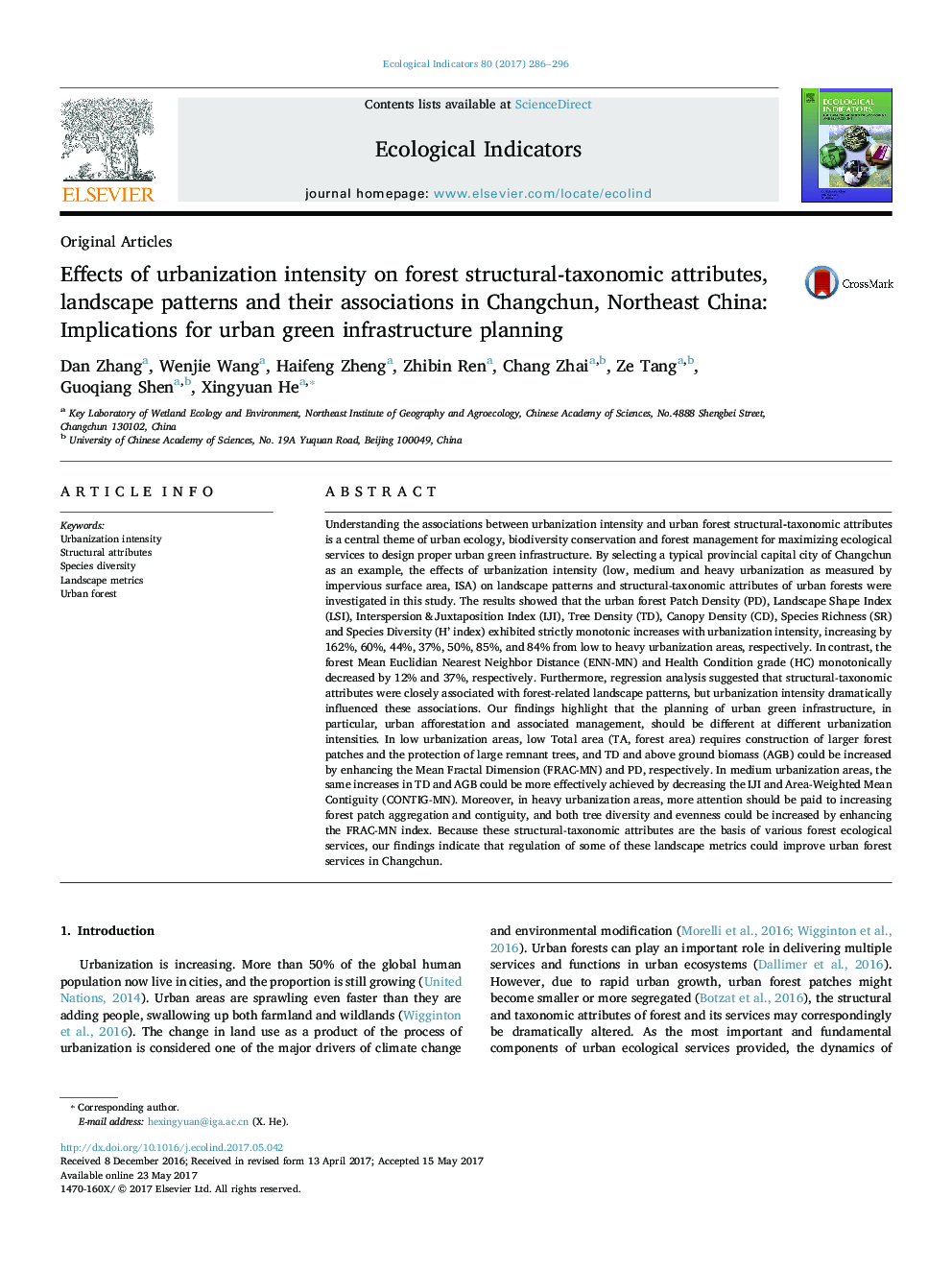| Article ID | Journal | Published Year | Pages | File Type |
|---|---|---|---|---|
| 5741391 | Ecological Indicators | 2017 | 11 Pages |
â¢Forest structural-taxonomic attributes across urbanization intensities are analyzed.â¢Forest species richness and diversity are the highest at heavy urbanization area.â¢Associations between landscape metrics and forest attributes are explored.â¢Regulations of landscape metrics are proposed to improve urban forest planning.
Understanding the associations between urbanization intensity and urban forest structural-taxonomic attributes is a central theme of urban ecology, biodiversity conservation and forest management for maximizing ecological services to design proper urban green infrastructure. By selecting a typical provincial capital city of Changchun as an example, the effects of urbanization intensity (low, medium and heavy urbanization as measured by impervious surface area, ISA) on landscape patterns and structural-taxonomic attributes of urban forests were investigated in this study. The results showed that the urban forest Patch Density (PD), Landscape Shape Index (LSI), Interspersion & Juxtaposition Index (IJI), Tree Density (TD), Canopy Density (CD), Species Richness (SR) and Species Diversity (H' index) exhibited strictly monotonic increases with urbanization intensity, increasing by 162%, 60%, 44%, 37%, 50%, 85%, and 84% from low to heavy urbanization areas, respectively. In contrast, the forest Mean Euclidian Nearest Neighbor Distance (ENN-MN) and Health Condition grade (HC) monotonically decreased by 12% and 37%, respectively. Furthermore, regression analysis suggested that structural-taxonomic attributes were closely associated with forest-related landscape patterns, but urbanization intensity dramatically influenced these associations. Our findings highlight that the planning of urban green infrastructure, in particular, urban afforestation and associated management, should be different at different urbanization intensities. In low urbanization areas, low Total area (TA, forest area) requires construction of larger forest patches and the protection of large remnant trees, and TD and above ground biomass (AGB) could be increased by enhancing the Mean Fractal Dimension (FRAC-MN) and PD, respectively. In medium urbanization areas, the same increases in TD and AGB could be more effectively achieved by decreasing the IJI and Area-Weighted Mean Contiguity (CONTIG-MN). Moreover, in heavy urbanization areas, more attention should be paid to increasing forest patch aggregation and contiguity, and both tree diversity and evenness could be increased by enhancing the FRAC-MN index. Because these structural-taxonomic attributes are the basis of various forest ecological services, our findings indicate that regulation of some of these landscape metrics could improve urban forest services in Changchun.
